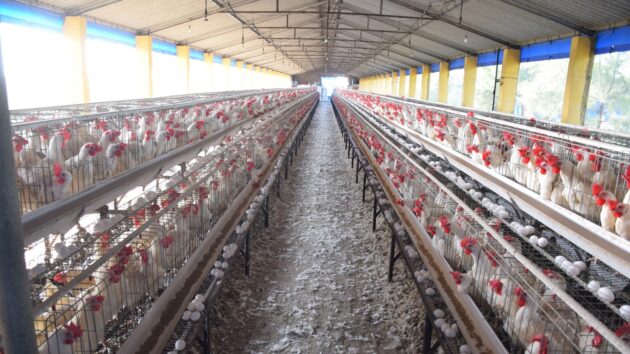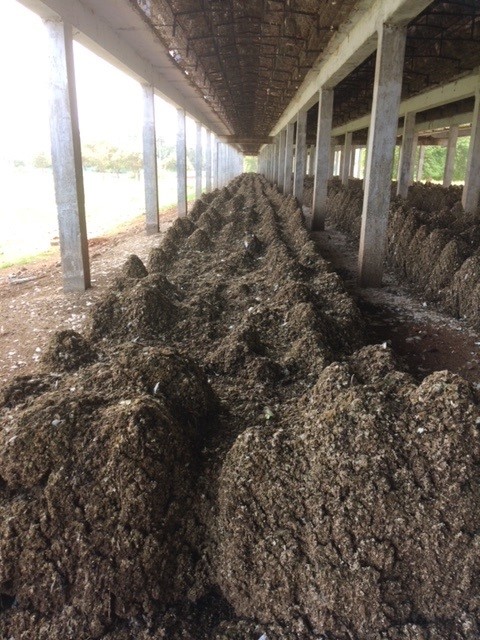
Chaitanya Joshi
Researcher in animal genetics and breeding
Gujarat Biotechnology Research Centre
Safe disposal of poultry waste has become one of the Gujarat state government’s priorities as genetic studies confirm how antimicrobial resistance can pass from chicken litter into the food system.
Antimicrobial resistance (AMR) in India is a growing challenge to policymakers charged with determining the best steps to prevent the further spread of this threat to human health.
Its impact on human health as infections become untreatable with antibiotics and other antimicrobials is projected to be catastrophic. Almost 5 million people who died in 2019 suffered from drug-resistant infections – more than a million of them in India. Globally, AMR directly caused 1.27 million of those deaths, 297,000 of them in India. Two million deaths due to AMR are projected to occur in India by the year 2050.
AMR is a One Health problem. Overuse and misuse of antibiotics in animals and humans is projected is contributing to the rising threat of antibiotic resistance. Antimicrobial resistant genes are also found in the environment as a result of the use of animal manures in agriculture, including chicken litter which is popular as a fertiliser because of its ready availability and high nitrogen content.
Transmission of antimicrobial resistant genes through food chains, including from poultry production and the cultivation of crops on poultry-litter manured soil, is therefore a serious public health issue.
The World Health Organization (WHO) has described AMR as a “crisis that must be managed with the utmost urgency”, and the World Health Assembly, WHO’s decision-making body, adopted the Global Action Plan on AMR in 2015 as a part of the tripartite collaboration of WHO, the Food and Agricultural Organization (FAO) and the World Organisation for Animal Health (WOAH). The Plan provides the framework for action plans at country-level. The Government of India launched its National Programme on AMR Containment during its 12th five-year plan (2012-2017). In this, India’s state-level governments were advised to make their own action plans.
Understanding the magnitude of the problem to be tackled has been critical in preparing all these action plans and in its preparation for its State Action Plan for Containment of Antimicrobial Resistance (SAPCAR), the Government of Gujarat sought evidence to inform intervention strategies that can reduce or prevent transmission of resistant genes. Through Hub investigator Dr Madhvi Joshi’s participation in the committee considering the SAPCAR, Hub work provided some of the evidence it needed to inform changed practices.

That evidence came from Hub genomic studies at Gujarat Biotechnology Research Centre (GBRC) which demonstrated that resistant genes can be transmitted from poultry litter to plant systems under normal growing conditions in the field, as well as under experimental conditions in pots. The findings illustrate how antimicrobial use in poultry poses risks to the environment – and ultimately people, via food systems.
The draft SAPCAR being prepared in Gujarat has a key focus on strengthening surveillance for AMR in the human, animal, food and environment sectors, along with a focus on fostering research and innovations in AMR. In particular, it is set to see the monitoring of antibiotic use on some large poultry farms, and to identify and seek implementation of best practices for waste management in livestock agriculture, including on poultry farms.
At the same time as feeding Hub findings into the SAPCAR drafting process – and by virtue of GBRC having developed and put in place the pipelines and protocols for this work – GBRC was selected to take a central role in a new Network Program on Antimicrobial Resistance Superbugs & One Health, comprising 28 institutions, including those in the medical, veterinary, fisheries, environmental and biotechnology sectors, and established by the Gujarat State Biotechnology Mission. GBRC is responsible for genome sequencing and analysing bacterial and environmental samples received from network partners in the initiative, as well as being responsible for displaying the results in real time on a live public dashboard.
The programme, which runs until 2025, aims to analyse 10,000 samples in total. At the end of its first year, more than 9,000 AMR isolates had been banked and GBRC had analysed by whole genome sequencing more than 2,300 isolates. These findings too are contributing to vital insights about the spread of AMR and are being used by policymakers to inform interventions.

Researcher in animal genetics and breeding
Gujarat Biotechnology Research Centre
Genomics researcher and microbiologist
Gujarat Biotechnology Research Centre